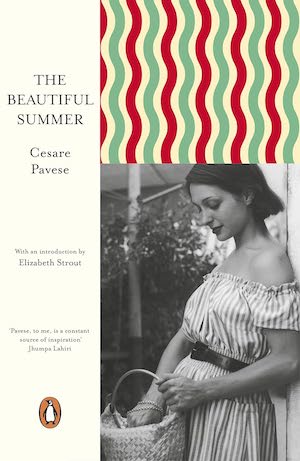| A Year With John Banville | #JohnBanville2024 |

Fiction – Kindle edition; Picador; 178 pages; 2011.
Birchwood is John Banville’s second novel, a dizzyingly audacious confection, first published in 1973.
It’s the story of the Godkins, an Anglo-Irish family living in a Big House on the Birchwood estate, whose money and influence are long gone. The dynamics within the family, including power struggles, dark secrets and eccentric, often violent, behaviour, drive much of the plot forward.
Once, in a row with Aunt Martha, when she had flung an ashtray at his head, he snapped his teeth abruptly shut in the middle of a howl of fury and turned on his heel and stalked out into the garden. We sat in silence and inexplicable horror and listened to his laughter booming in the flower-scented darkness outside, and I, cowering in my corner, felt my face grinning wildly, uncontrollably, at this intimation of splendour, of violence and of pain. [page 20]
It’s told through the eyes of Gabriel Godkin, the first-person narrator, who reflects on his upbringing, relationships and experiences. He’s trying to work out how he fits into the family hierarchy and is surprised to discover he will inherit the estate — although certain forces are out to ensure this does not happen.
So Birchwood was to be mine, that much I understood, albeit dimly. What I failed to see was the plot to deprive me of my inheritance. Aunt Martha was the instigator and prime conspirator. She arrived one bright windy morning in June. [page 32]
A story of two halves
Midway through the book, there’s a distinct change in gear and style, as Gabriel runs away to join the circus (yes, really) in pursuit of his long-lost twin sister, who may or may not exist.
But a sister! Half of me, somewhere, stolen by the circus, or spirited away by an evil aunt, or kidnapped by a jealous cousin – and why? A part of me stolen, yes, that was a thrilling notion. I was incomplete, and would remain so until I found her. All this was real to me, and perfectly reasonable. [page 78]
The story is full of eccentric characters, many of whom are badly behaved (Granny Godkins, for instance, is a bit of an old witch, and Aunt Martha is duplicitous), and told through a series of equally eccentric set-pieces that become increasingly more outlandish (and abhorrent) as the book wends its way towards a not altogether satisfactory conclusion.
It feels part black comedy, part Gothic fairy tale, and the section set in the circus — or “travelling theatre” as Gabriel describes it — borders on the surreal.
It’s fair to say that the sum of Birchwood isn’t as good as its individual parts. I can’t help thinking that Banville, then a young author (he was 27), threw all his thematic interests — time, memory, family dynamics, art, sex, guilt, Irish political history et al — into one big pot, let it all ferment and then served up a complex and rich narrative stew, some of which is outlandishly funny, absurd or both.
Despite the lush prose and vividly descriptive writing, the book is uneven in plot and tone of voice. Yes, it’s deeply flawed (and perhaps not a good one to start with if you have never read John Banville before), but I had a thoroughly entertaining time reading it!
So here then is an ending, of a kind, to my story. It may not have been like that, any of it. I invent, necessarily. [page 170]
Cathy has also read this one and her review is much more eloquent than mine.
I read this book as part of A Year With John Banville, which I am co-hosting with Cathy from 746 Books. You are invited to join in using the hashtag #JohnBanville2024. To learn more, including our monthly reading schedule, please visit my John Banville page.
You may have noticed that I’m a little behind in my John Banville reading — I was supposed to read and review this one in March — but other things got in the way. I am playing catch-up now and expect to review both my April (‘Mefisto’) and May (‘The Book of Evidence’) reads by the end of this month. Thanks for your patience.
♥ In March Cathy reviewed ‘Christine Falls‘, the first crime novel written under Banville’s pen name Benjamin Black. I have previously reviewed that one here.
♥ My scheduled April read is ‘Mefisto’, published in 1986, and Cathy’s read is ‘Ghosts’. Expect reviews soonish.















